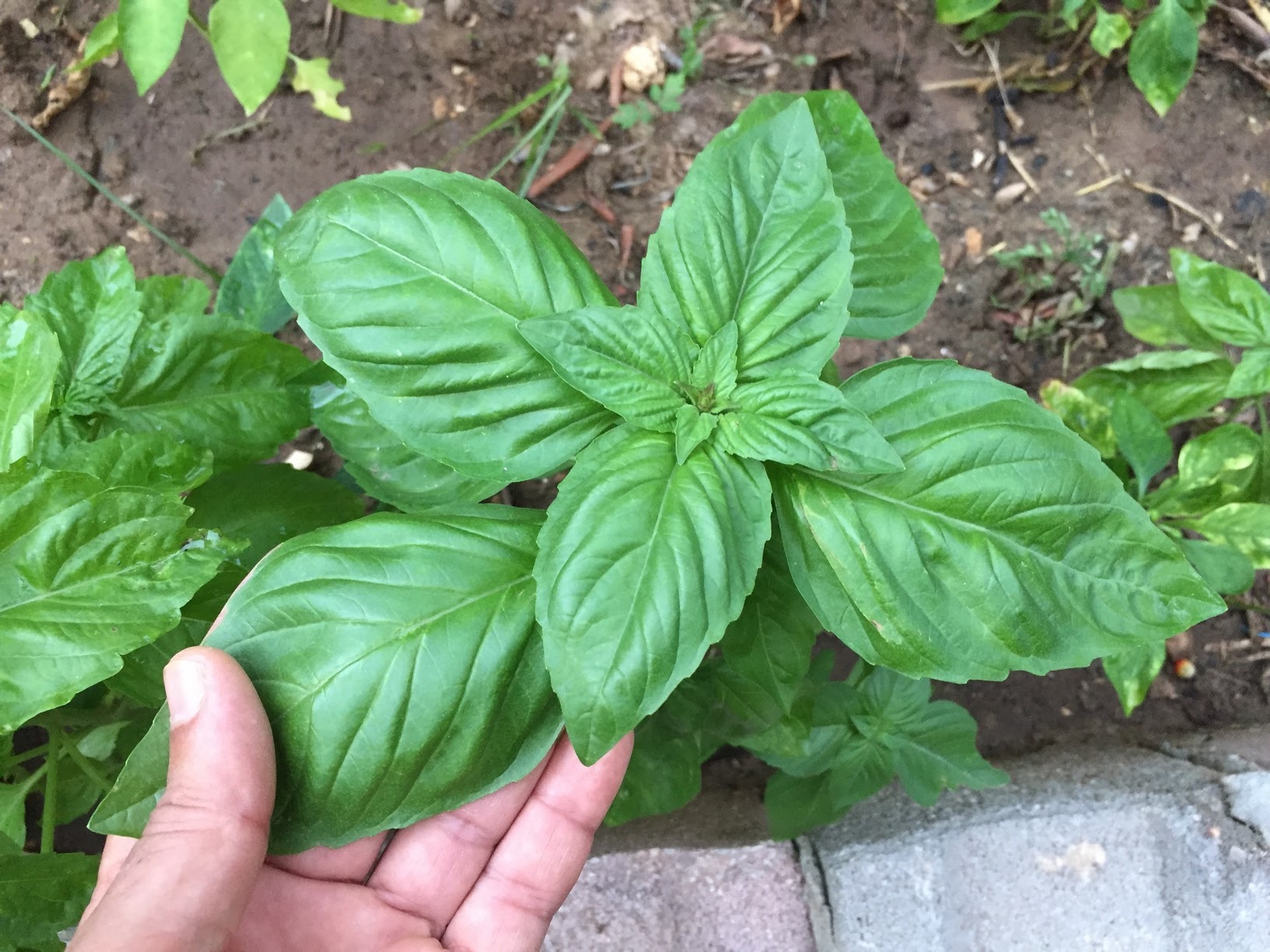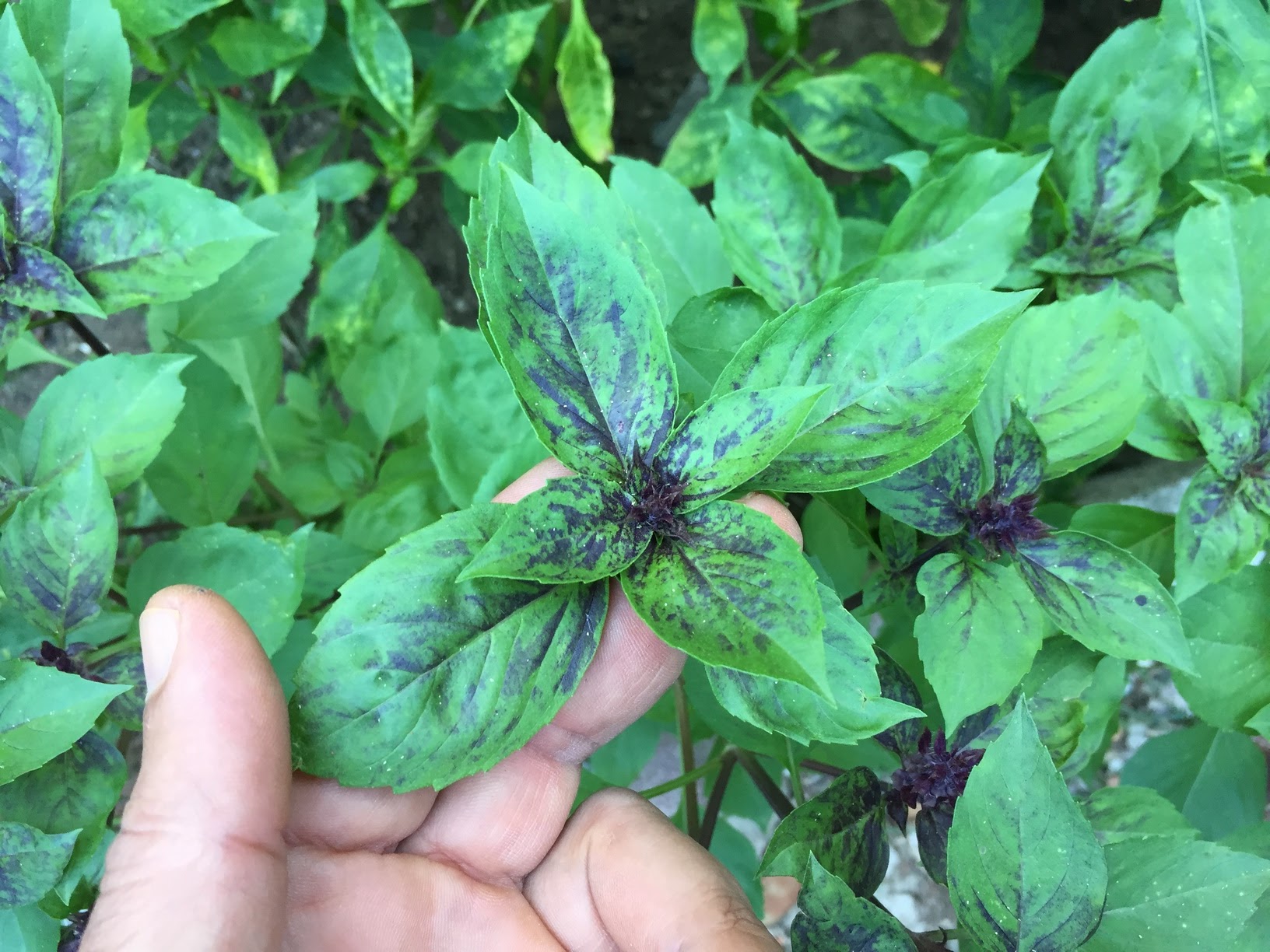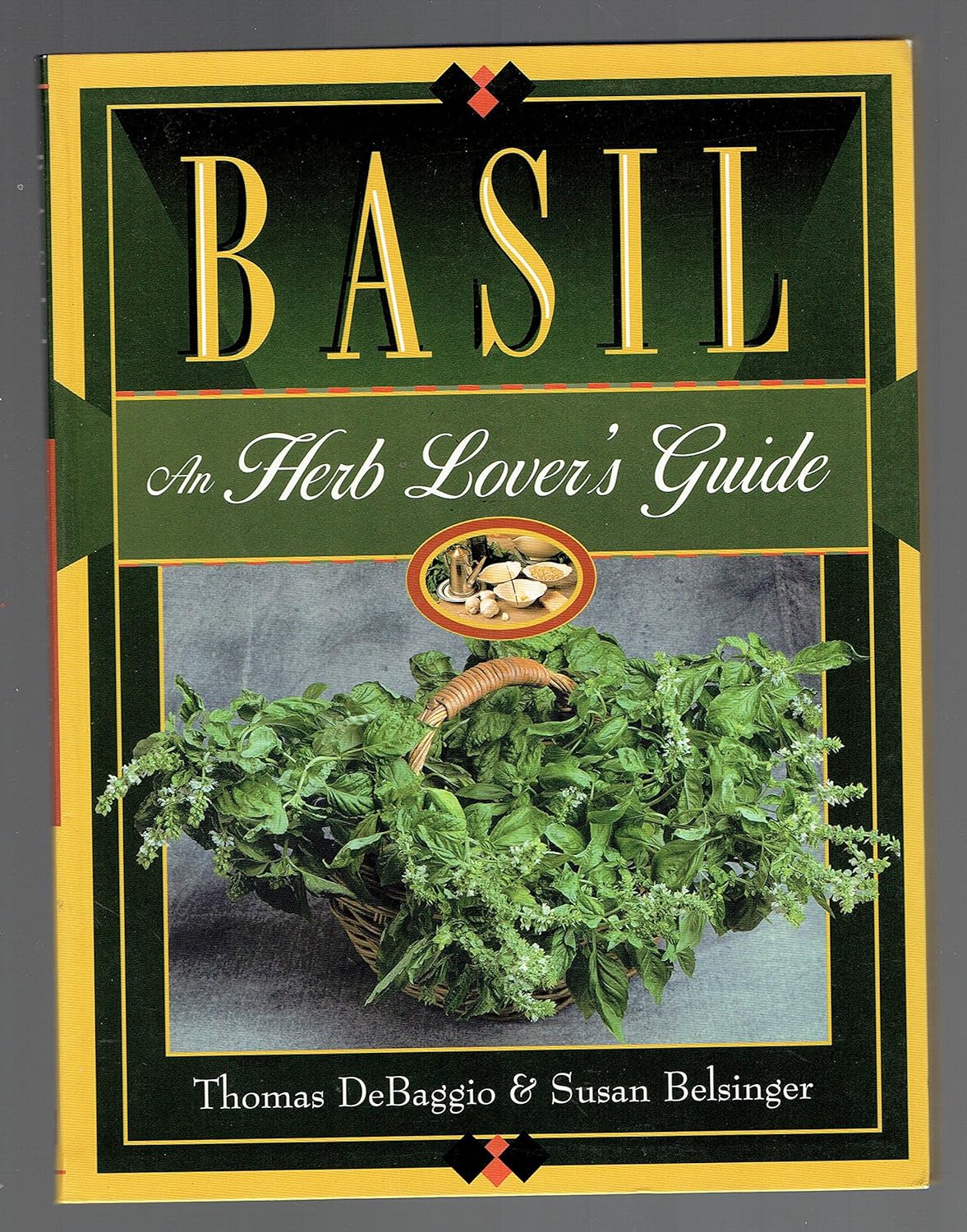Shortcode: {tocify} $title={Table of Contents}
Basil Plant Description
Basil is a hairy, labiate plant, growing about 3 feet high. The stem is obtusely quadrangular, the labiate flowers are white, in whorls in the axils of the leaves, the calyx with the upper lobe rounded and spreading. The leaves, greyish-green beneath and dotted with dark oil cells, are opposite, 1 inch long and 1/3 inch broad, stalked and peculiarly smooth, soft and cool to the touch, and if slightly bruised exale a delightful scent of cloves.$ads={1}
Basil came to America via the Massachusetts Bay Colony where it was introduced in 1621. From there, its cultivation spread through the colonies. It has long been used to flavor food in the western world, but was used primarily for its aroma in India. Today, it is most recognized for its influence in Italian and Thai cooking.
Benefits of basil leaves
The benefits of basil leaves are quite a lot!
- Basil is considered as a powerful anti-stress agent. Its anti-inflammatory and immune-boosting properties help manage stress
- The powerful essential oils, including eugenol, citronellol and linalool, help lower inflammation through their enzyme inhibiting properties. The anti-inflammatory properties of basil may help lower risk of heart disease, rheumatoid arthritis and inflammatory bowel conditions.
- The strong anti-inflammatory and antimicrobial properties of basil would help prevent formation of acne.
- The eugenol present in the leaves of basil ensures anti-inflammatory action in the digestive tract and helps balance acid within the body and restores the body's proper pH level.
- Consuming basil leaves boosts your intake of vitamin K. The vitamin K in your body activates proteins needed for healthy tissue growth, including your cartilage, bone and stomach. It also plays a major role in helping your body form blood clots, and works to prevent abnormal bruising, internal bleeding and blood loss.
- Fresh basil leaves are a generous source of vitamin "A". Vitamin "A"main role in your body is supporting cellular differentiation, or maturation. It also regulates gene activity, turning on genes that new cells need to contribute to functional tissue. Consuming fresh basil leaves as a source of vitamin A also benefits your eyesight.
Basil Flower Description
- Basil flowers are perfectly edible. The flowers may be light purple, pink or white. Their flavor also varies.
Watch Basil The King Of The Herbs Video
Basil varieties
There are several varieties, differing in the size, shape, odour and colour of the leaves. The Common Basil has very dark green leaves, the curled-leaved has short spikes of flowers, the narrow-leaved smells like Fennel, another has a scent of citron and another a tarragon scent, one species has leaves of three colours, and another 'studded' leaves.
. Christmas Basil
Christmas Basil have shiny green leaves and small purple flowers. the plant will reach up to 1.5 feet but is generally about a foot in height. Its flavor is a tad fruity and has been compared to wine. Its aroma does not betray its taste in that it has an evergreen scent reminiscent of pine. The origin of its name "Christmas" is uncertain whether it comes from its cold tolerance or pine like aroma.. Cinnamon Basil
Cinnamon basil is tall and bushy reaching around 3 feet in height with an equal girth. The leaves are thin and serrated. Coloration green leaves and lilac colored stems, pointed light purple flowers. Cinnamon basil has a mild cinnamon flavor and aroma .. Dark Opal Basil
This basil Reaches 12-18 inches in height and is easily maintained. In the culinary realm it is more full flavored and pungent than standard sweet basil and is used for both its flavor and color. Dark purple so far as flavor is concerned has been compared to ginger with a hint of anise.. Green Ruffles Basil
This cultivar reaches a height of up to 2 feet and roughly 1.5 feet wide. Its leaves look like immature lettuce leaves, they are lime green and ruffled. The flowers are pinkish white, sometimes more white than pink. It is more delicate than many other varieties and requires more care . The flavor is comparable to sweet basil with a hint of cinnamon.. Holy Basil
Holy basil attains a height of up to 1.5 feet. Have a bushy growth and produces stems and leaves that range in color from light green to dark purple.. Genovese Basil
A sweet basil and one of the most commonly cultivated. It is an Italian variety. Its leaves are a crinkled dark green and extremely tender, So popular in pesto and assorted sauces and salads. This basil Should be started early indoors in most regions or outside after any danger of frost.. Greek Basil
Greek Basil leaves are minute and bright green. The plant is small, averaging about 1/2 to 1 foot in height, sometimes a tad taller. It is generally grown as an annual in most regions but has been known to grown for several seasons in warmer climates. It lends itself well to both edible gardens and landscape scenarios.$ads={2}
Not only that, but it is mildly sweet and spicy and has been compared to cloves, so far as aroma is concerned it mimics the flavor but is not overly aromatic.
. Lemon Basil
It is named "Lemon" because it has a citrus flavor and aroma. The plant produces slender and narrow light green leaves. The flowers differ little from other basil cultivars in appearance but emit a lemony aroma.. Lettuce Basil
Large Leafed Italian, Large Leaf Basil or Crispum Basil. This Plant reaches 1.5 to 2 feet in height. Crinkled, delicate 3-4 inch medium green broad leaves. Mild flavor and aroma clove and mint, slight peppery taste.. Sweet Basil
The most popular and widely used culinary herb. It is a tender annual, aromatic plant with a spicy odor and flavor. It grows 12-18 inches tall, and foliage color can range from green to purple. Foliage size can vary from large lettuce-like leaves to very small leaves, half inch in size.. Summerlong Basil
A dwarf basil developed by Burpee that averages about 10 inches tall. What it lacks in height it makes up for in vigor. Summerlong retains its bushy stature and produces longer than other varieties.. Thai Basil
Thai Basil, sometimes called Siam Queen. It is related to mint and is sometimes classified as a sweet basil. Siam Queen is native to Southeast Asia. The plant produces has narrow green leaves, purple stems, and pinkish purple flowers. The leaves of this variety are larger than other Thai varieties and hence produces a much larger yield. It attains a height of 1 to 1.5 feet and grows in a bush habit. The flavor is spicy sweet with only a hint of cinnamon and licorice.Watch How To Grow Basil Video
Want To Read: How To Grow Basil
Useful Book to Read: Basil: An Herb Lover's Guide
Pin for later!
In conclusion, basil truly deserves its title as the king of herbs, reigning supreme with an unmatched combination of flavor and fragrance that captivates the senses. As we've explored the world of this aromatic herb, it's evident that basil's culinary prowess extends far beyond its traditional use in pesto. Whether it's the sweet notes of Genovese basil, the peppery undertones of Thai basil, or the citrusy hints of lemon basil, each variety brings a unique personality to the table.
Beyond its culinary appeal, basil boasts a rich history and a multitude of health benefits, making it a versatile herb that transcends mere garnish status. From ancient civilizations to modern kitchens, basil has woven itself into the fabric of human culture, enhancing both the taste of our dishes and the tapestry of our traditions.
As we savor the diverse flavors and fragrances that basil imparts, it's clear that this herb is more than just a kitchen companion—it's a culinary maestro, a healing touch, and a fragrant symphony rolled into one. So, whether you're cultivating your own basil garden or simply enjoying a sprinkle of fresh basil on your favorite dish, take a moment to appreciate the regal essence of this herb, for in the world of culinary delights, basil undeniably wears the crown with unparalleled grace.
Please let us know your thoughts, experiences, or questions in the comments below. If you like this, you can share with your friends!
Affiliate Disclosure!This website is a participant in the Amazon Services LLC Associates Program, an affiliate advertising program designed to provide a means for sites to earn advertising fees by advertising and linking to Amazon. Some of the links to products on this site are affiliate links. These are products that I've used or recommend based from homesteading experience. I do make a small commission (at no extra cost to you) from these sales. {alertInfo}












